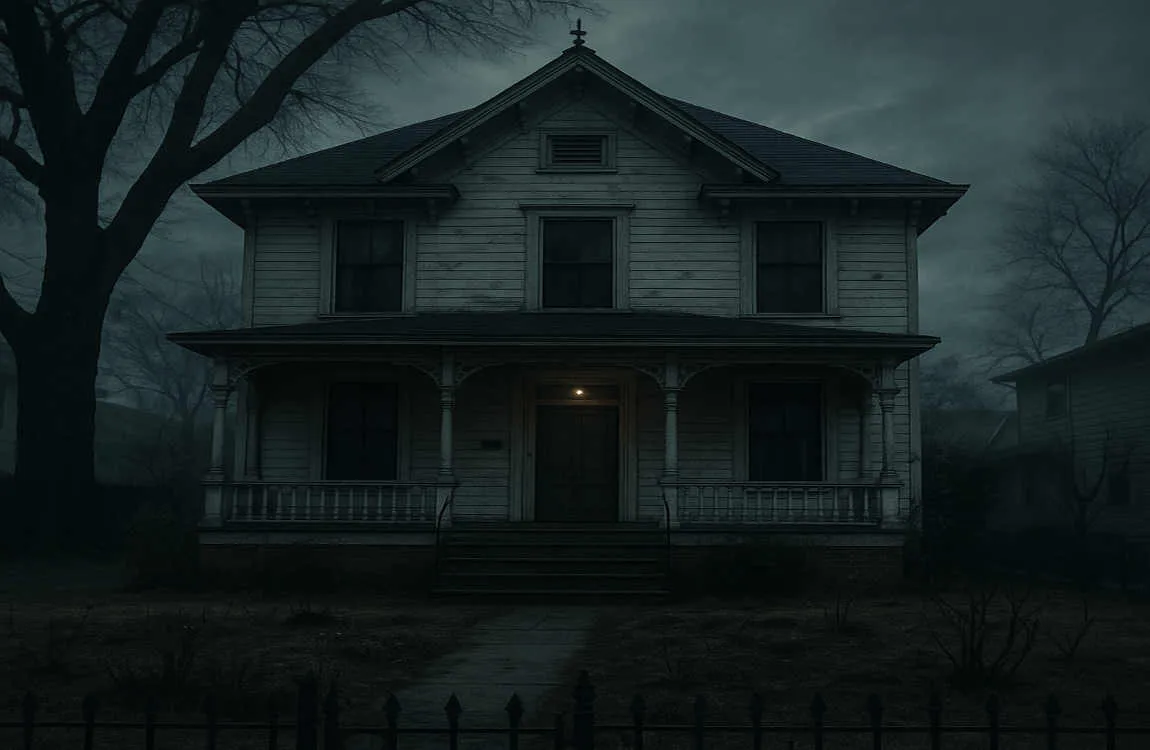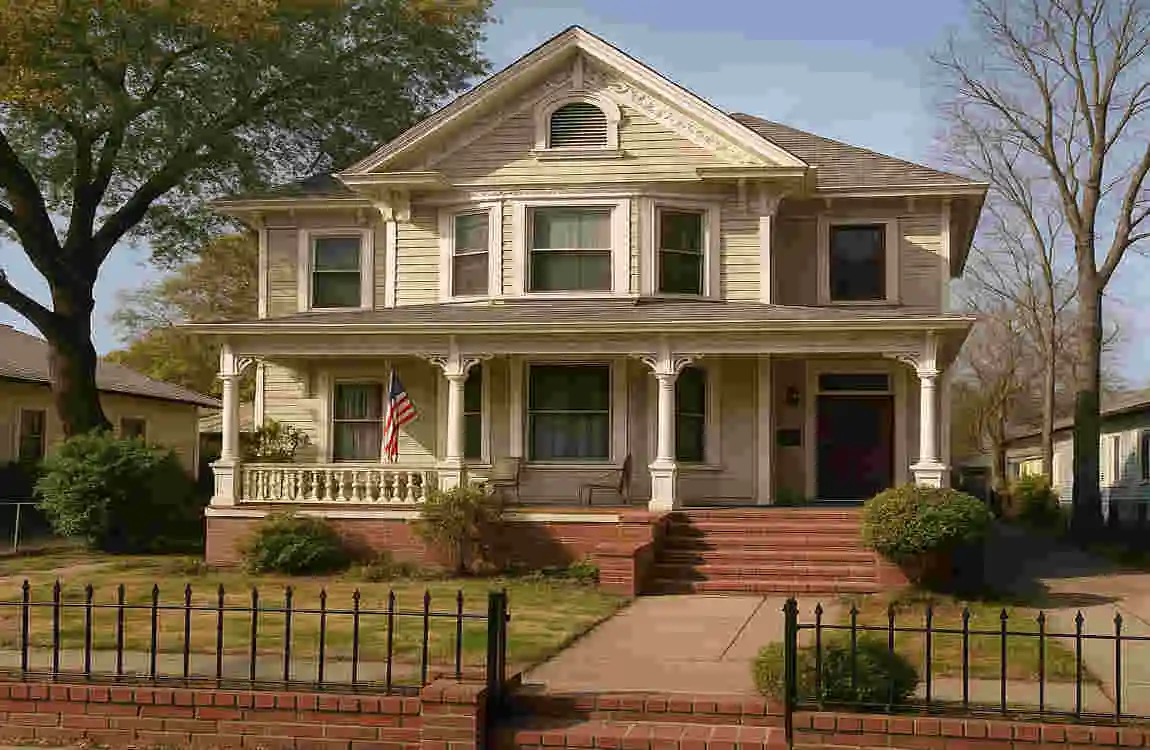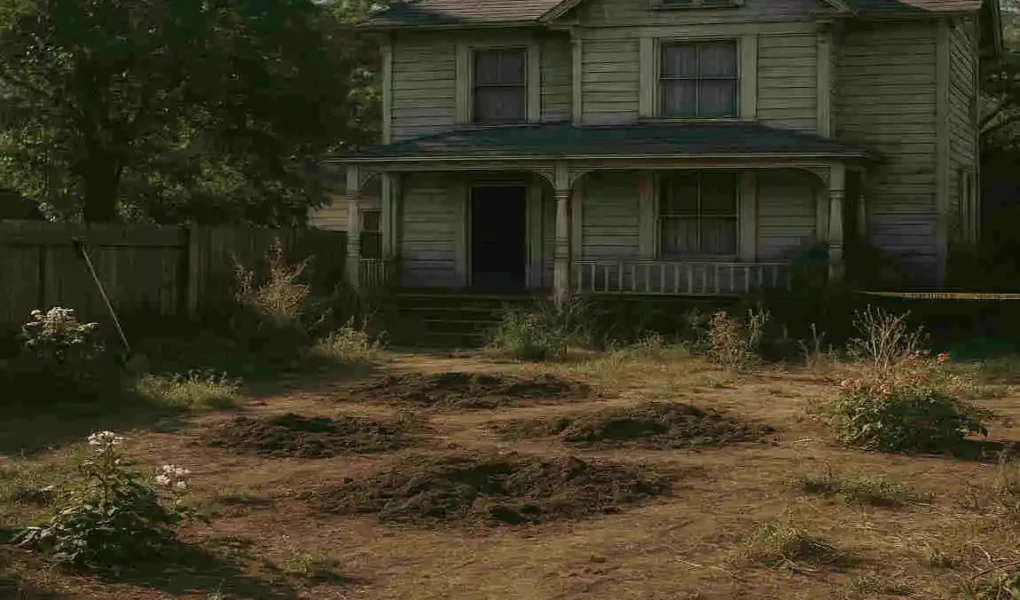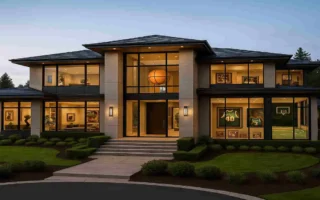Imagine stepping into a place where history took a dark turn. A place that has become a haunting symbol of one of the most chilling true crime stories in American history. This is the story of Dorothea Puente and her infamous house, particularly the backyard that holds so many secrets.
Dorothea Puente was a seemingly ordinary woman who ran a boarding house in Sacramento, California. But beneath her friendly facade lurked a sinister secret. Between 1982 and 1988, she murdered at least nine of her tenants, burying their bodies in her backyard.
The backyard of Dorothea Puente’s house has become a focal point for true crime enthusiasts and curious visitors alike. It’s a place where the past and present collide, where the horrors of what happened still linger in the air.
The Gruesome History of Dorothea Puente’s House

The Crimes of Dorothea Puente
Dorothea Puente’s crimes shocked the nation. She preyed on the vulnerable – elderly and disabled tenants who trusted her to provide them with a safe home. Instead, she drugged them, stole their money, and killed them, burying their bodies in her backyard.
You may also read (how has gerald mcraneys house changed over the years).
Timeline of Events
The investigation into Puente’s crimes began in 1988 when a tenant’s family member reported him missing. As the police dug deeper, they uncovered a series of suspicious deaths and disappearances linked to Puente’s boarding house.
In November 1988, a search of her backyard led to the discovery of seven bodies. Two more were found in a nearby river, believed to have been placed there by Puente to throw off investigators.
The House and Backyard’s Pivotal Role
The backyard of Dorothea Puente’s house was the key to unraveling her crimes. It was here that she buried her victims, hoping to keep her dark secrets hidden. But the soil couldn’t stay silent forever, and the backyard ultimately became her undoing.
Lasting Impact on Sacramento
The murders sent shockwaves through the Sacramento community. It was a stark reminder that evil can lurk in the most unsuspecting places. Even today, the backyard of Dorothea Puente’s house remains a haunting reminder of the horrors that occurred there.
The Location Today – Address and Neighborhood Vibe

Where is the Dorothea Puente House?
The house is located at 1426 F Street in Sacramento, California. It’s a modest, two-story Victorian home that looks unassuming from the outside.
The House’s Current Appearance
Since the murders, the house has undergone some changes. It’s been repainted and renovated, with new owners trying to distance it from its dark past. But for those who know the story, the chilling history is impossible to ignore.
The Neighborhood’s Transformation
The neighborhood around the house has also changed over the years. Once a quiet, working-class area, it’s now more gentrified, with trendy cafes and boutiques popping up. But the backyard of Dorothea Puente’s house remains a somber reminder of the past.
Visitor Disclaimer
If you’re considering visiting the house, remember to respect the current residents’ privacy. The house is private property, and trespassing is not allowed. Always be mindful of the impact your visit may have on the community.
Step-by-Step Tour of the Infamous Backyard
Approaching the Backyard
As you approach Dorothea Puente’s house, you’ll notice the property’s exterior. A tall fence surrounds it, adding to the sense of mystery and isolation.
As you reach the gate, a chill may run down your spine. You’re about to step into a place where unimaginable horrors occurred. The air feels heavy with the weight of history.
Entering the Chilling Backyard
Stepping into the backyard, your first impression may be one of eerie calm. It’s a small, enclosed space that feels both intimate and oppressive at the same time.
The layout of the backyard is simple. There’s a narrow path that winds its way around, flanked by overgrown plants and a few small outbuildings. But it’s the details that echo the property’s dark past – the patches of disturbed earth where bodies were once buried.
Notorious Burial Sites Explained
The backyard was the final resting place for seven of Puente’s victims. The burial sites were scattered throughout the small space, some close to the house, others near the back fence.
Today, there’s little visible evidence of the burial sites. The ground has been smoothed over, and new plants have been added. But for those who know the story, it’s impossible not to imagine the horrors that took place here.
The discoveries were made through a painstaking police search. Cadaver dogs helped pinpoint the locations, and careful excavation revealed the chilling truth hidden beneath the soil.
The Forensic Investigation – How the Backyard Revealed the Truth
Step-by-Step Account of the Police Search
The police search of Dorothea Puente’s backyard was a meticulous process. They began by interviewing neighbors and gathering evidence that pointed to the backyard as a potential crime scene.
Using shovels and other tools, they carefully dug up the backyard, inch by inch. It was a slow and grueling process, but it ultimately led to the discovery of the first body.
Use of Technical Equipment and Cadaver Dogs
The investigation relied heavily on technical equipment and the keen senses of cadaver dogs. Ground-penetrating radar helped identify areas of disturbed soil, while the dogs were able to sniff out the scent of human remains.
These tools were crucial in uncovering the full extent of Puente’s crimes. Without them, some of the burial sites may have remained hidden forever.
Statements from Investigators
Investigators who worked on the case described the scene as haunting and surreal. They were confronted with the grim reality of what had happened in that small backyard.
One investigator recalled the moment they uncovered the first body, saying, “It was like a punch to the gut. We knew we were dealing with something truly evil.”
The Role of Neighbors’ Suspicions and Witness Testimonies
Neighbors played a crucial role in the investigation. Their suspicions about Puente’s activities and their willingness to come forward with information helped lead the police to the backyard.
Witness testimonies also helped piece together the timeline of events and provided crucial evidence against Puente. Without the cooperation of the community, the full extent of her crimes may never have been uncovered.
Stories and Myths: What Visitors Say About the Backyard
First-Hand Accounts
Those who have visited Dorothea Puente’s house often report feeling a sense of unease and sadness. Some describe feeling a heaviness in the air, as if the ghosts of the past still linger.
One visitor said, “It’s a haunting place. You can’t help but think about the lives that were lost there, the suffering that happened in that small space.”
Common Myths and Urban Legends
Over the years, various myths and urban legends have sprung up around the backyard of Dorothea Puente’s house. Some believe the spirits of Puente’s victims haunt the backyard, while others claim to have seen ghostly apparitions on the property.
While these stories add to the mystique of the place, it’s essential to separate fact from fiction. The true horror of what happened in that backyard is chilling enough without embellishment.
You may also read (what makes jennifer anistons montecito home a celebrity hotspot).
Interviews with Local Historians and True Crime Experts
Local historians and true crime experts have weighed in on the significance of the backyard of Dorothea Puente’s house. They see it as a stark reminder of the dangers that can lurk in the most unexpected places.
One expert said, “The backyard is a powerful symbol of the evil that Dorothea Puente committed. It’s a place where the past and present collide, where we’re forced to confront the darkest aspects of human nature.”
The Lasting Infamy – Media, Documentaries, and the Backyard’s Place in True Crime Lore
Books, Films, and TV Features
The story of Dorothea Puente and her infamous backyard has been the subject of numerous books, films, and TV shows. These works have helped keep the case in the public eye and have contributed to the backyard’s lasting infamy.
Some of the most notable works include the book “The Bone Garden” by William Hallstead and the TV movie “The Night Stalker: The Hunt for a Serial Killer.”
Notable Scenes and Photos
Many of these works feature scenes or photos of the backyard of Dorothea Puente’s house. These images have become iconic, capturing the eerie atmosphere of the place where so much horror occurred.
One particularly haunting photo shows the backyard during the police investigation, with the ground dug up and the bodies being carefully removed. It’s a stark reminder of the tragedy that unfolded there.
The Site as a Stop for Sacramento True Crime Tours
Today, the backyard of Dorothea Puente’s house is a popular stop on Sacramento true crime tours. These tours allow visitors to learn more about the case and see the site where the crimes occurred.
However, visitors need to approach these tours with respect and sensitivity. The backyard is not just a tourist attraction – it’s a place where real people suffered and died.
Psychological Impact – Why the Backyard Chills Us
The Power of Atmosphere in True Crime Tourism
The backyard of Dorothea Puente’s house has a powerful atmosphere that can send chills down the spine of even the most seasoned true crime enthusiast. It’s a place where the past feels very present, where the horrors of what happened still linger in the air.
This atmosphere is part of what draws people to the site. There’s a certain allure to standing in a place where history took a dark turn, where you can almost feel the weight of the past pressing down on you.
Psychological Reasons the Backyard Affects Visitors
There are several psychological reasons why Dorothea Puente’s backyard can have such a profound impact on visitors. For one, it’s a stark reminder of our mortality and vulnerability.
The backyard also taps into our fear of the unknown and the macabre. It’s a place where the line between life and death feels very thin, where we’re forced to confront the darkest aspects of human nature.
The Allure of Dark Tourism
The backyard of Dorothea Puente’s house is a prime example of a dark tourism site – a place where people visit to learn about and experience the darker side of history.
Dark tourism can be a way for people to process their fears and anxieties, to confront the things that scare them in a safe and controlled environment. It can also be a way to pay tribute to the victims and to ensure that their stories are never forgotten.
Practical Information for the Curious Visitor
Can You Tour the Backyard of the Dorothea Puente House?
Currently, the backyard of Dorothea Puente’s house is not open to the public for tours. The property is privately owned, and visitors are not allowed to enter the backyard.
However, you can still see the exterior of the house from the street. Just remember to be respectful of the current residents and to follow all local laws and regulations.
Respecting the Current Residents and Property Rights
Visitors to the backyard of Dorothea Puente’s house must respect the current residents and their property rights. The house is their home, and they deserve privacy and peace.
Avoid trespassing or taking photos that invade their privacy. If you want to learn more about the case, there are plenty of other resources available that don’t involve disturbing the current residents.
Alternative Ways to Learn About the Backyard
If you can’t visit the backyard Dorothea Puente house in person, there are still plenty of ways to learn about the case and the backyard’s role in it.
You can watch documentaries like “The House of Puente” or read books like “The Bone Garden.” There are also virtual tours available online that allow you to explore the backyard from the comfort of your own home.
Responsible True Crime Tourism Tips
If you’re interested in true crime tourism, it’s essential to approach it responsibly. Always respect the victims and their families, and be mindful of the impact your visit may have on the community.
Do your research beforehand and be aware of local laws and regulations. And remember, true crime tourism should never be about glorifying violence or exploiting tragedy. It’s about learning from the past and paying tribute to those who were lost.
Conclusion
The backyard of Dorothea Puente’s house remains a haunting reminder of one of the most chilling true crime stories in American history. It’s a place where the past and present collide, where the horrors of what happened still linger in the air.
You may also read (viggo mortensen house).



